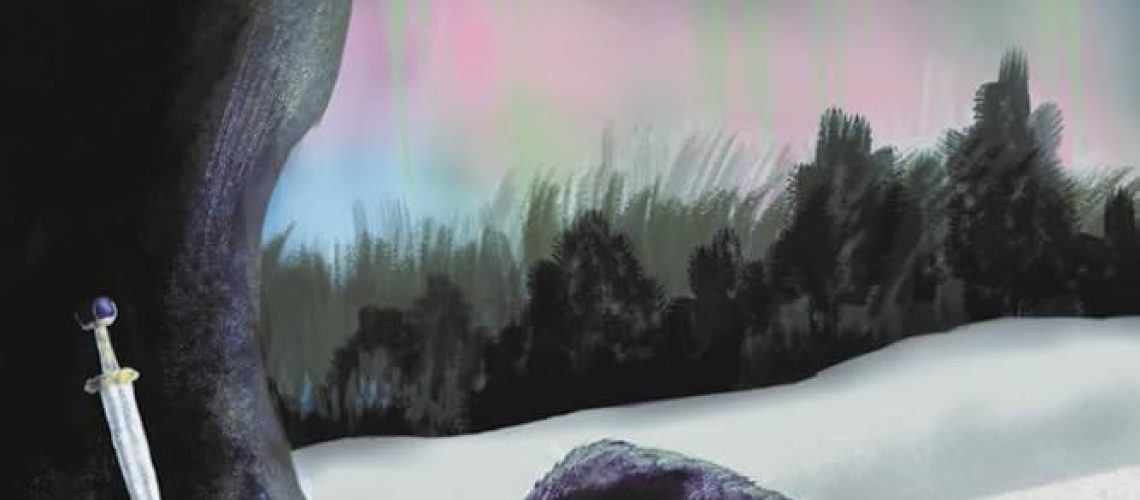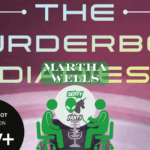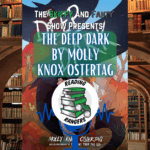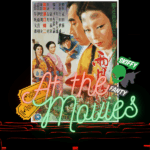K.V. Johansen was born in Kingston, Ontario, Canada, where she developed her lifelong fascination with fantasy literature after reading The Lord of the Rings at the age of eight. Her interest in the history and languages of the Middle Ages led her to take a Master’s Degree in Medieval Studies at the Centre for Medieval Studies at the University of Toronto, and a second M.A. in English Literature at McMaster University, where she wrote her thesis on Layamon’s Brut, an Early Middle English epic poem. While spending most of her time writing, she retains her interest in medieval history and languages and is a member of the SFWA and the Writers’ Union of Canada. In 2014, she was an instructor at the Science Fiction Foundation’s Masterclass in Literary Criticism held in London. She is also the author of two works on the history of children’s fantasy literature, two short story collections, and a number of books for children and teens. Various of her books have been translated into French, Macedonian, and Danish.
Question 1. Who is KV Johansen?
K.V. Johansen is a woods-witch and a wanderer, a storyteller watching from the shadow of oak and stone and fern …
Maybe. Maybe not. I’m Canadian, with degrees in English and Medieval Studies, and a lifelong fascination with language(s) (and trees). Beginning in 1997 with Torrie and the Dragon, I became a fairly well-known and occasionally award-winning Canadian children’s author (Torrie, Pippin, The Cassandra Virus trilogy, The Warlocks of Talverdin series), with excursions into literary criticism through two books on the history of children’s fantasy, but I was always writing fantasy for adults at the same time. Since Blackdog, the first in the five-book series Gods of the Caravan Road, came out in 2011, I’ve been mostly concentrating on writing for adults. I took a byway into literary fiction with Love/Rock/Compost, writing as Kris Jamison, but now I’m back on my native ground, with a new secondary world fantasy duology coming out soon.
I write warriors and storytellers and musicians, gods and shapeshifters, the people on the edges. I also play guitar (without any great talent for music, alas) and my garden is definitely beginning to feel like the mossy, overgrown, tangled yet still tended clearing around some forest-witch’s house.
Q2. Some authors play in just one genre. But as your bio indicates, you have a number of different types of writing. So what draws you to write in a number of genres?
I suppose I just write where the story takes me. Secondary world fantasy is definitely where I end up most of the time; it’s the place my imagination lives, or its native tongue, if you will, but other stories happen — I never planned to write picture books, but there they were, the character of Pippin, who was inspired by my real dog Pippin, driving the shape that story took. Epic fantasy, like Gods of the Caravan Road, or a simpler quest story like in the Torrie books, or near-future science fiction middle-grade books — in each of those worlds, it’s the story of the characters that shaped what the book ended up being, both in its genre and the audience it was written for, rather than a decision to write a particular type of thing leading to a search for the story. Love/Rock/Compost, which is about music, depression, and how people find a way to live with one another, could easily have been another fantasy and contained all of those things, but that didn’t feel like the story of those particular characters. Almost always, the idea of the characters and where they are in a fragment of place and story comes to me and I take it from there, letting it grow as it seems naturally-inclined to, rather than thinking in only one mode or genre or for a particular audience and then trying to plan stories there.
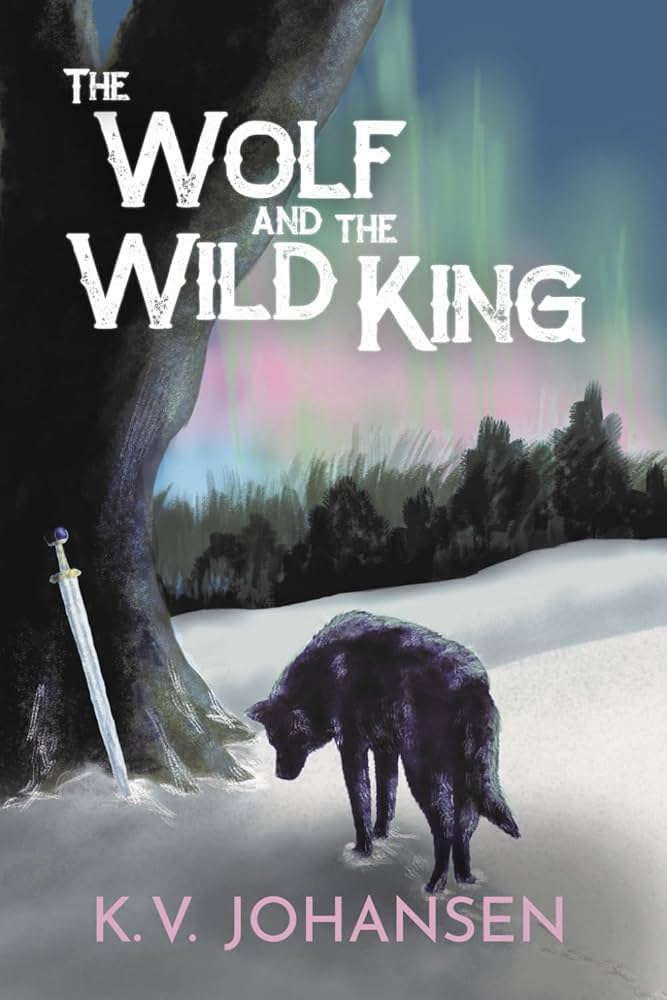
Now, with The Wolf and the Wild King, I’ve done something I’m calling high fantasy, an older term not used so much any more, but to me it suggests a subtly different flavour of secondary world fantasy from epic — a world more mysterious, less explained; more folkloric roots showing through the moss, more things half-seen in the shadows. The action, aside from a glimpse of one character’s childhood, is confined to just one land and focused on only two narrative characters. But epic or high, that’s one of those shades of colour people argue about on the internet — is it bluish-green or greenish-blue? It’s secondary world fantasy, where I feel most at home, and it’s a story that couldn’t have been told in any other mode.
Q3. You’ve mentioned that The Wolf and the Wild King is High Fantasy. Give us an elevator pitch for the book.
I’ll go with a shortened quote from the back cover copy: assassin, executioner, shapeshifter, and dutiful son of the undying Queen, Mairran is dispatched by his mother to find the killer of an earl whose life was offered in an unsanctioned sacrifice. In another age, the mute outlaw Lannesk swears an oath to follow the Grey Hunter and the Wild King, ancient guardians of the Forest, in a war against the invading dragon-kin and their sorcerer-priests. Past and present tangle, as a conspiracy of fell magic threatens the land and its people.
Of course, I’d rather take the stairs …
Q4. So let’s go off of the Stairs metaphor you just ran with. What drew you to want to tell this story, in this subgenre?
I’d been wanting to tell a story rooted in a forest landscape for a long time, something with the feel of the Danish medieval ballads (the sorts of things I reimagined into literary fairy tales in The Serpent Bride, my second book, way back in 1998) and of what I took out of fairy-tales as a child, the ones set deep in forests, with lone heroes (often girls) struggling through baffling events to save themselves or the people they cared about from malevolent enemies. Those fairy-tale forests are, I think, the last great story-shadow of the Mirkwood, that long before Tolkien, long before Scott, spread its roots under so many northern and Germanic legends, before Scott and Morris and most significantly Tolkien developed it in modern literature. Anyway — dark, mysterious forest and lonely questing hero — I wanted that but I hadn’t found a way to do it. I also had some characters I wanted to write about, who were drifting around in a blurry way, each containing several possible variants of the same ur-character. I wrote part of a much more folkloric version of things — it had ballad-elves and changelings and a Viking fleet, trying to bring them together — but though I still think it was very good and I regret it not coming to be, it kept running aground. But, as I’ve said, my stories usually begin with a character in a situation and it all unfolds from there, and trying to make a story be a particular pre-planned shape has never worked well for me, so that one just withered away. Then the Queen in my mind became this Queen, and Mairran said, “The old songs tell how the Queen my mother came down from the ice of the north, flying in the shape of a great dragon, silver as hoarfrost under the moon…” and everything fell into place around him, and around Lannesk, two centuries earlier, first struggling to take care of his little brother as they wander the Forest with their sometimes-abusive mother, vagrant entertainers and beggars, and then Lannesk, his brother at his side, as the young outlaw, answering the summons of the Wild King and the Grey Hunter, legendary Immortals of the Forest, to fight the sorcerer-led dragon-kin.
The story isn’t that of lands and folk and gods in conflict, like in Gods of the Caravan Road, which is why I’m thinking of it as high fantasy rather than epic, just that shade of difference I think there should be in the meanings. It’s a land, a folk struggling to determine its own future course — even the dragon-kin of Lannesk’s time are exiles, who were once folk of the Forest, outcasts who’ve come to take back what they think should be theirs in the name of an Immortal of the Forest who was overthrown and bound beneath the Lake in an earlier age. That, and the roots of the story that lie in medieval tales of individual heroes, mean that the focus is much more on just the two main characters, Mairran and Lannesk. These two threads weave through one another in the telling until they come together, and the shape of the greater story, what Mairran’s really struggling against, not the murder he’s been sent to solve, begins to unfold.
Q5. Your books indeed, as you say, start with a character in a situation. Here, though, you have two characters in two different time periods in a situation. Which came first, Lannesk or Mairran, and how did you bridge to the other in the course of writing the book?
The first version actually began with Lannesk, a bondservant condemned to die in a ritual sacrifice, remembering being a child encountering the Wild King, but Mairran immediately existed in that version too, much more like himself than that Lannesk was; Mairran’s initial scene was him being summoned before his mother to report after an assassination. I think the existence of one demanded the other. This was always going to be a story that wove back and forth between the two characters until the connection between the threads became obvious and it all knotted together. In that first version, though, they existed in the same time period, providing a narrative on opposite sides of a rebellion (by Mairran’s human mother against an immortal queen). In what became the final story, I started with Mairran, a son enthralled by (I mean literally, not as a romantic metaphor) and being used by his mother, the undying Queen, as a weapon of her rule over the land. Ironically, given it had been his story to begin with, I wasn’t even certain Lannesk was part of it any longer, or if he was someone I’d have to leave till another book grew around him. But the Wild King existed, or had existed in a past now become legend, one of the Immortals who were essentially the lesser gods of the Forest, and the connection between him and Lannesk gave me the way to tell another layer of the story, Lannesk’s story, two hundred years or so earlier. That makes it a much stronger book — you have that tension between two presents, what’s happening in Lannesk’s time isn’t some old tale of long ago, it’s his living, bleeding now, but Mairran’s now is also always there, and the readers themselves will carry the shadows of Lannesk’s time forward into that, and a sense of doom from Mairran’s time back into the past. Other elements in the story — particularly the existence of the Grey Hunter and the Wild King, the two Immortals most central to the war against the dragon-kin, the two who defeated and bound Erryth beneath the Lake “long and long ago” — provide a bridge between the past and present, and connect the characters of Lannesk and Mairran in ways that unfold through the two layers of time, until they come together.
Q6. You made the choice to make Lannesk mute. What prompted you to have one of your two protagonists be mute?
I don’t remember! Lannesk has always been someone who didn’t speak, just like he’s always been quite tall, and calm, worried, and responsible. It seemed to be an attribute of his from the start. Within the story, it’s partly physical damage, but it’s partly also psychological; he couldn’t speak for a long time, due to his injury, and it was painful to try; his voice was so weak and rough as to be intelligible only with difficulty after that, so he just found it easier not to, and I think it turned into a great mental block, as well as the scarring to his vocal cords. But that all came into the story as I went along, as an explanation for what already existed in the character. I’m not one of those who thinks that you have to do the worst possible thing to your characters to move the story along — it’s the most interesting thing that could happen with a character that keeps me reading, not the nastiest — so it wasn’t any conscious “what would be worst for a singer” decision. Although the injury he gets defending his mother is an explanation of his lack of speech after the fact, on the literary level, the muteness could be symptomatic of all this damage he’s carrying that he’s pretending doesn’t exist. I can’t talk about what demonstrates this to me without giving away important things that I’m sure a reader would rather experience unfolding, but for Lannesk, eventually, the physical scars have to be just some sort of memory. That’s not why I created him the way I did, but it’s why his being mute works on more than one level.
(Or maybe I just imprinted on Silent, the unspeaking wizard of the Black Company, at a young age.)
Q7.Tell me more about the terrain and landscape you feature in the novel, particularly the idea of setting this story in a northern taiga forest climate surrounding an enormous lake.
Winter, lake, forest — those were the elements that filled my mind when I began writing. After Gods of the Caravan Road, which is mostly mountains and deserts, steppes and, in one, a great river valley, I really wanted to write about forests, but I’d also read too many fantasy novels where it snows, and people go frolicking about without really seeming to notice the cold, or it snows, but somehow it doesn’t land on the roads. You in Minnesota probably remember the winter of 2015; here in New Brunswick we had so much snow that I had to snowshoe around the yard to make a path for the dog (and Ivan was a Siberian husky and German shepherd mix, not some wee thing that couldn’t cope with snow). Our house is near the bottom of a hill and the snow was drifted so high I could step over the clothesline (wearing snowshoes); at one point I realized that somewhere underneath where I was tramping along was, in fact, my car. I wanted to put that sort of winter into a book.
I wanted a winter forest, but I also wanted an inland sea; it was always there in my conception of the land, and I decided it would be a freshwater one. In addition to a longstanding interest in Lake Baikal, I’d been reading a lot about the Baltic and the Black Sea, and of course I grew up beside Lake Ontario, and had a great-uncle who farmed up in Dryden; visiting him meant an epic road trip along the shores of Lake Superior. The Lake in The Wolf and the Wild King is almost the size of the Baltic, if the Baltic were a freshwater lake. The lands ruled by the Queen are vast! (I’m still suffering Canadian geographic scale in fantasy mapping, you can tell.) In reality, I think such a culture as exists in the Forest lands would think of themselves as people of the Lake as much as the woods; water is what connects them: the Lake, its coastline, the rivers. The Forest lands are the watersheds of all the rivers that run into the Lake. The word Lann, in the book, means not a river, though that’s what you might guess from the way it’s used, but the whole watershed of a major river and its tributaries, and those watersheds also form the provinces of the Queen’s realm. The lands of the Forest are fenced off from the Coastlands of the east by a chain of mountains, with only one river flowing out of the Lake, plunging down a high escarpment in a great waterfall before flowing eastwards to the sea.
The forest of the Forest itself is mostly an eastern North American one. If there are cedars, they’re Thuja occidentalis; the pines are jack pine or white pine, the maples are sugar and red and silver; the elms are the great cathedral-pillars with their high arching branches of Ulmus americana, which those of you younger than me have probably rarely seen as a healthy specimen of three centuries or more; the red squirrels are the little Tamiasciurus hudsonicus and the black and grey squirrels are the American grey squirrel (which were mostly black in eastern Ontario where I grew up); there are snowshoe hares, black bear, lynx, moose and beaver, and probably there are porcupines, though I don’t think I mentioned them — but I really like the idea of the aurochs, so there are aurochsen, too. This definitely is not meant to be some alternate-history North America; I just wanted to put my own trees in, for a change, after the Caravan Road lands that grew out of the natural history of Eurasia.
It’s a human-settled land, but there are, or were, non-human people too: the faylings, who have now faded into legend, if not myth, and the Immortals, some of whom may have been human in their origins, like Gwion the Wild King, but others, like the Grey Hunter, who may take human form sometimes but never were human. The population is quite thin and scattered — the land is still dominated by trees. The Queen has built roads, stone highways, which may be part of how she has kept control of the land — if you doubt that the solstice rituals which bind Queen and Forest have anything to do with her couple of centuries of rule. Probably the landtheyns owe some labour service by their folk to maintain those roads; Mairran doesn’t think much about how his mother governs, so that’s all faintly sketched in the background. Most building in the Forest lands is done in timber; it doesn’t matter if you’re a landcarl or an earl, building in stone much above the level of a foundation is only permitted by licence of the Queen, whose own great castle is stone, of course. The castles of the earls, even the keeps, are usually built in timber. (I read a very interesting book on timber castles in the course of my research.) But in Lannesk’s time, two centuries before, every earl had her stone tower — and there were many more earls then, one in every little valley, not only one over each Lann, each watershed province. There are ruins in the Forest, though Mairran doesn’t mention it — or hasn’t, so far. You’ll notice there’s a lot Mairran doesn’t talk, or think, about! He’s too overwhelmed with his own problems.
The Forest is quite far north; in winter, the nights are long and days grow very short — the cycle of the seasons, and the sun, is very important to the people there. Their chief festivals happen at the summer and winter solstice. In Mairran’s time, this involves human sacrifice — not on a large scale; generally there’s only one victim, whose blood is offered by the sacerdotal flint-king, the priest of knives, at the celebration attended by the Queen herself, with the burning of a straw or birch-twig figure substituted at most of the other festival bonfires throughout the land. It’s said to be a renewal of the bond between the undying Queen and the Forest she rules. Whether the Forest really wants this sort of offering or not remains to be seen, but regardless, the Forest is very much more than just landscape in people’s minds and in their lives; though not a sentience, it is a numinous presence.
My website is at http://www.kvj.ca and Bluesky is my main social media: https://bsky.app/profile/kvjohansen.bsky.social
The Wolf and the Wild King is published by Crossroad Press’s Mystique imprint and will be out November 19th in ebook: you can find purchase links here: https://books2read.com/u/mV1Dep
It should also be out in trade paperback before too long; keep an eye on my website or Bluesky feed for updates, or ask your local bookseller.
Thanks for doing this, Paul! It was a pleasure, as always.

